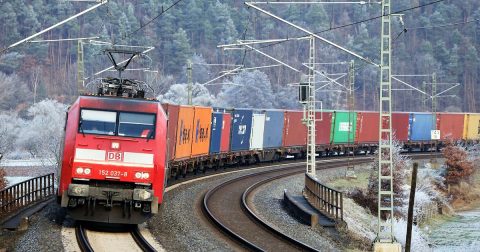UK’s intermodal future in focus

Crystal balls are fragile things. Consequently, it is with kid gloves that Karl Watts, managing director of Railmotive consultancy, is handling his very own oracle. Railmotive has outlined a possible path for the next ten years of intermodal rail operations in the UK. The future looks bright, but it also looks … boxy.
Making more of intermodal may seem like a puzzle to the casual observer. However, Karl Watts says there is scope to do far more without a radical industry retooling. Changing some practices and making more of what is already available could yield a much more productive sector. The intermodal sector will only grow, and rail freight could take that extra demand.
Growth would redraw the rail freight industry
To illustrate his proposals, Karl Watts has presented a narrative that follows the daily operation of a near-future intermodal flow. Karl suggests that existing technology and infrastructure are only a step away from a radical change in rail freight activity and viability. He proposes radically addressing the problems that hold back exponential growth in the market.

That growth would redraw the shape of the industry and open up new markets. Most notably, the changes he foresees would more than address the national desire for net-zero carbon in the economy – not least in the rail freight sector but in the broader logistics industry at large.
All very achievable
The paper from Railmotive is no fanciful pipe dream. The author, Karl Watts, is a career railwayman, business owner and rail industry pioneer. He has relevant real-world experience, having been involved in developing and procuring the UK’s first fleet of Stadler class 93 locomotives, the most advanced, state-of-the-art express freight and passenger locomotive ever to operate in the UK.
Karl was also on the frontline for Rail Operations Group, the UK’s first dedicated rolling stock services and test train operating company. He spearheaded Orion, the UK’s first rail-borne high-speed logistics train operating company.
The setting of this gaze into the future – just eight years away in 2032, follows the daily operation of an intermodal rail freight service operated by an established logistics business that has moved into the UK rail freight arena. “Whilst this fictitious scenario is based in the future, the technology captured within the paper is with us today,” says Karl. “There is no science fiction involved. The changes we need to make to our railway system to render it fit for the future are within our grasp and certainly within our capability. Therefore, this paper is far from being ‘pie in the sky’ thinking; it’s all very achievable.”




